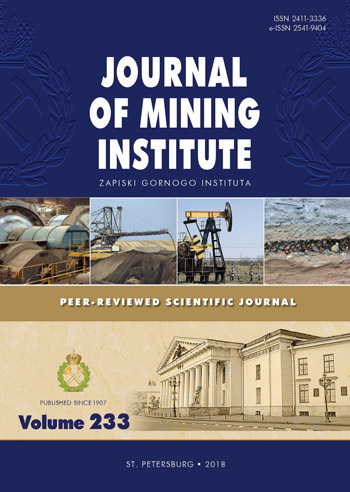Regularities of material destruction of the impactor in repeated single punch
- 1 — Ph.D., Dr.Sci. professor Saint-Petersburg Mining University
- 2 — Postgraduate student Saint-Petersburg Mining University
Abstract
The technique and the results of experiments on the study of the laws of the process of the cone-shaped tip of a freely falling impactor made of 38HM, U8, H12MF steels, subjected to typical heat treatment and additionally treated with cold, when they apply multiple (up to 10000) single impacts on granite under conditions approaching hydraulic impactor peaks. To explain the processes, we used the values of stresses σк, arising at the contact area of the impactor and the rock, calculated using the developed mathematical model. It has been established that the process of wear of an impactor with multiple single blows proceeds in three stages separated by critical values, , which correspond to the strength characteristics of the material of the impactor demonstrated in these dynamic conditions. With a small number of strokes (n ≤ n*) and the small size of the blunting area (stage I interaction) values σc exceed of steel and it is exposed to local destruction at the contact site, which is recorded as a significant loss of the impactor’s mass; with n* < n ≤ n** (stage II) the resulting stresses are not enough to destroy the material, but it is enough for its plastic deformation, accompanied by the movement of metal from the central part of the contact area to the peripheral and the destruction of part of the deformed metal by rock; with n > n** (stage III) arising σк do not reach the level and the decrease in the mass of the impactor is determined by the resistance of the steel to abrasion by the products of rock destruction, displaced by the impactor from the well. The treatment of impactors from all tested steels with cold leads to an increase in their wear resistance; The total depth of the holes punctured by the cold-treated H12MF steel impactor at the time of the interruption of the rock penetration is four times higher than that of the 38HM steel impactor subjected to typical heat treatment.
Funding
The authors express deep gratitude to Associate Professor A.P.Batalov for the assistance rendered in the preparation of this article.
